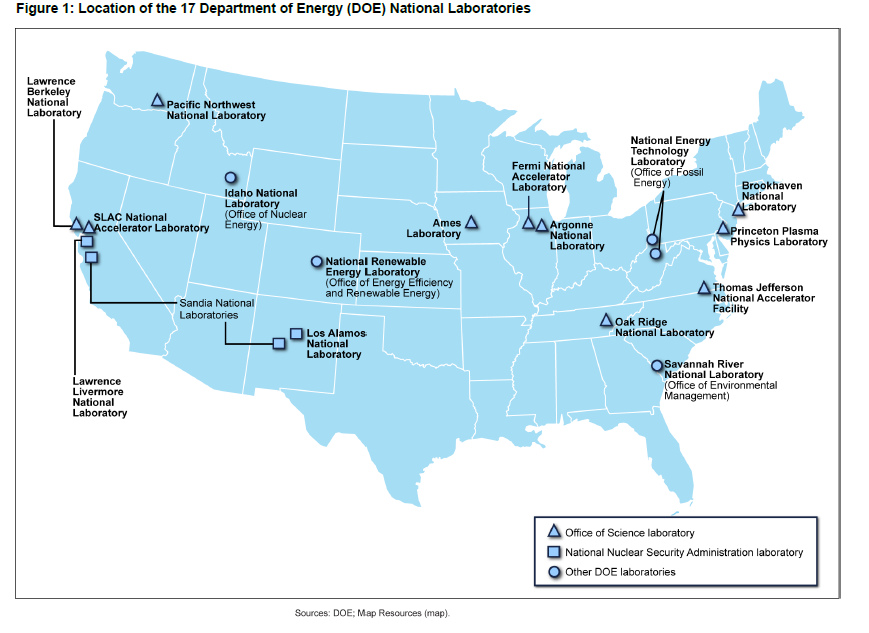Clean-up of legacy materials at Los Alamos National Laboratory, run by the current M&O partnership contract since 2006. (DOE via Flickr)
UPDATE: Find our FY18 contracting forecast for DOE here.
The Department of Energy (DOE) is tasked to “ensure America’s security and prosperity by addressing its energy, environmental and nuclear challenges through transformative science and technology solutions.” In order to fulfill this important mission, DOE spends around 90% of its yearly budget on contracts and grants which “impact a variety of industries and individuals across the nation.” This amounted to $26.72 billion alone in 2016 awards, according to USASpending. With such a large, direct financial impact and vital mission, as well as potential budget changes under the new administration, EZGovOpps is providing an analysis of the unique contracting environment which DOE operates in.
DOE Contracting: Big Numbers and Major Players
As mentioned previously, DOE spent $26.72 billion on contracting in 2016, which made up 90.2% of the DOE budget for that year. Looking at the top contractors that year, some familiar Federal contracting companies are present: Lockheed Martin, Battelle Memorial Institute, and Bechtel Group are all in the top 10 contractors list. However, the other top prime recipients include companies like Los Alamos National Security LLC, Consolidated Nuclear Security LLC, and even the State of California. This begins to illustrate the unique contracting environment at DOE.
Out of the large amounts of contracting dollars that get awarded by DOE, a majority is spent on running DOE National Laboratories and Technology Centers which are located across the United States. Each laboratory is allotted and run by a large Maintenance and Operations contract, which is defined by the DOE as:
The unique M&O contract relationship enables the Government to establish objectives for the laboratories’ research programs and to exercise controls necessary to assure security, safety, and the prudent use of public funds, while allowing private sector organizations selected for the technical ability and managerial expertise to carry out the laboratories’ day-to-day operations.
A map of DOE National Laboratories (GAO via Flickr)
The large M&O contracts have a very broad mix of awardees. SLAC National Accelerator Laboratory in California, for example, is operated under an M&O solely by Stanford University. Pacific Northwest National Laboratory, in Washington State, is currently operated by Battelle Memorial Institute as the sole contractor. A number of other M&O contracts, on the other hand, are operated by private corporations jointly founded by a number of companies specifically for operating the laboratories. Oak Ridge National Laboratory’s M&O contract is held by UT-Battelle, established as a limited liability partnership in 2000 between Battelle Memorial Institute and the University of Tennessee, the state where the lab is located.
Los Alamos National Laboratory in New Mexico is run by Los Alamos National Security LLC. With a contract worth $36.6 billion over a potential 20 year period of performance since it started in 2006, Los Alamos National Security is a private partnership composed of the University of California, BWXT Government Group, Bechtel, and URS (which was acquired by AECOM in 2014). For a full look at that contract, sign up for a free trial with EZGovOpps. Not only will you have access to that opportunity, but you’ll have a detailed view of DOE contracting forecasts for prime and subcontracting, and custom analyst-updates which will provide robust, actionable market intelligence.
Contracting Complications
While the majority of opportunities, including the M&O contracts, are publicly accessible, the sensitive nature of DOE’s nuclear and research work means that certain opportunities are treated as classified activities. This is particularly relevant for a sub-agency at DOE, the National Nuclear Security Administration (NNSA), which is “responsible for enhancing national security through the military application of nuclear science” and which also “responds to nuclear and radiological emergencies in the U.S. and abroad.” Under the budget submitted by President Trump for FY18, DOE would experience a budget cut of $1.7 billion for a total $28 billion. Beyond that, internal funding would be shifted and programs cut, leading to an extra $1.4 billion in funding for NNSA. This reduction and reorganization of funds could lead to less open opportunities, and more classified funding for nuclear activities.
Don’t forget to view our full GovCon News section for more intel.


